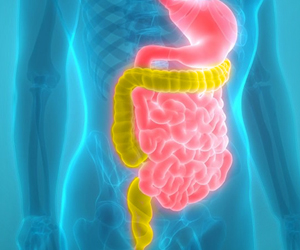If you believe that your mom's age-old advice of washing fruits and vegetables before eating could save you from a stomach upset, think twice, for a new research has found that washing alone, even with chlorine disinfectants, is not enough to remove common bacteria that can cause severe illness, including food poisoning and diarrhoea.
A number of studies have revealed that certain disease-causing bacteria, such as Salmonella and E. coli, can avoid these chemical sanitizers, as they can easily penetrate inside the leaves of lettuce, spinach and other vegetables and fruit, where surface treatments cannot reach. Besides, microbes can organize themselves into tightly knit communities called biofilms that coat fruits and vegetables and protect the bacteria from harm.However, scientists at the U.S. Department of Agriculture have now cited that that a technique, called irradiation, a food treatment currently being reviewed by the FDA, can effectively kill such internalized pathogens that dodge conventional chemical sanitizers.
During irradiation, food is exposed to a source of electron beams, creating positive and negative charges. It disrupts the genetic material of living cells, inactivating parasites and destroying pathogens and insects in food, including E. coli and Salmonella.
Conducted under the direction of Brendan A. Niemira, Ph.D., a microbiologist with the USDA's Agricultural Research Service in Wyndmoor, Pa., the study revealed that this technique can prove to be useful in reducing the numbers of foodborne illnesses.
"When bacteria are protected - whether they're inside a leaf or inside a biofilm - they're not going to be as easy to kill. This is the first study to look at the use of irradiation on bacteria that reside inside the inner spaces of a leaf or buried within a biofilm," said Niemira.
For the study, the researchers cut leaves of romaine lettuce and baby spinach into pieces and submerged them in a cocktail mixture of E. coli. When the bacteria were pushed inside the leaves with a vacuum perfusion process, the leaves were treated with a three-minute water wash, a three-minute chemical treatment or irradiation. After treatment, the leaves were suspended in a neutral buffer solution and crushed to recover and count the internalized bacteria.
Advertisement
Later, lab tests were also conducted with biofilms to see how well different strains of Salmonella and E. coli, which were buried inside the biofilms, stood up to irradiation. It was found that the biofilms having Salmonella tended to die more easily with irradiation, while those that were infected with E. coli were a bit more resistant.
Advertisement
Right now, the researchers are conducting studies of biofilms on leafy green vegetables for a better understanding on how irradiation might work on plants in the field.
The study was described at the 235th national meeting of the American Chemical Society.
Source-ANI
SPH/L









